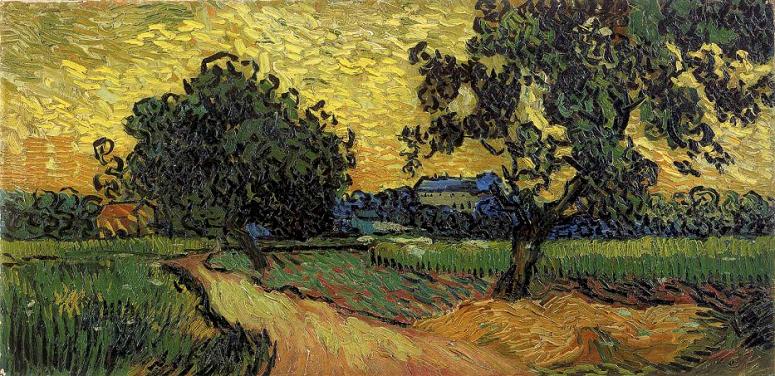
Twilight. Twilight on Earth is the illumination of the lower atmosphere when the Sun itself is not directly visible because it is below the horizon.
Twilight is produced by sunlight scattering in the upper atmosphere, illuminating the lower atmosphere so that Earth's surface is neither completely lit nor completely dark. The word twilight is also used to denote the periods of time when this illumination occurs.
The farther the Sun is below the horizon, the dimmer the twilight. When the Sun reaches 18° below the horizon, the twilight's brightness is nearly zero, and evening twilight becomes nighttime.
When the Sun again reaches 18° below the horizon, nighttime becomes morning twilight. Owing to its distinctive quality, primarily the absence of shadows and the appearance of objects silhouetted against the lit sky, twilight has long been popular with photographers, who sometimes refer to it as sweet light, and painters, who often refer to it as the blue hour, after the French expression l'heure bleue.
Twilight should not be confused with auroras, which can have a similar appearance in the night sky at high latitudes.By analogy with evening twilight, the word twilight is also sometimes used metaphorically, to imply that something is losing strength and approaching its end. For example, very old people may be said to be in the twilight of their lives. The collateral adjective for twilight i
Twilight is produced by sunlight scattering in the upper atmosphere, illuminating the lower atmosphere so that Earth's surface is neither completely lit nor completely dark. The word twilight is also used to denote the periods of time when this illumination occurs.
The farther the Sun is below the horizon, the dimmer the twilight. When the Sun reaches 18° below the horizon, the twilight's brightness is nearly zero, and evening twilight becomes nighttime.
When the Sun again reaches 18° below the horizon, nighttime becomes morning twilight. Owing to its distinctive quality, primarily the absence of shadows and the appearance of objects silhouetted against the lit sky, twilight has long been popular with photographers, who sometimes refer to it as sweet light, and painters, who often refer to it as the blue hour, after the French expression l'heure bleue.
Twilight should not be confused with auroras, which can have a similar appearance in the night sky at high latitudes.By analogy with evening twilight, the word twilight is also sometimes used metaphorically, to imply that something is losing strength and approaching its end. For example, very old people may be said to be in the twilight of their lives. The collateral adjective for twilight i
Wikipedia ...